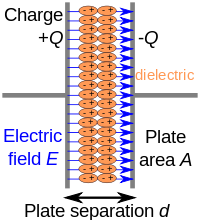
Photo from wikipedia
A computational method is developed for the study of mechanical response and fracture behavior of phase field crystals (PFC), to overcome a limitation of the PFC dynamics which lacks an… Click to show full abstract
A computational method is developed for the study of mechanical response and fracture behavior of phase field crystals (PFC), to overcome a limitation of the PFC dynamics which lacks an effective mechanism for describing fast mechanical relaxation of the material system. The method is based on a simple interpolation scheme for PFC (IPFC) making use of a condition of the displacement field to satisfy local elastic equilibration, while preserving key characteristics of the original PFC model. We conduct a systematic study on the mechanical properties of a sample nanoribbon system with honeycomb lattice symmetry subjected to uniaxial tension, for numerical validation of the IPFC scheme and the comparison with the original PFC and modified PFC methods. Results of mechanical response, in both elasticity and fracture regimes, show the advantage and efficiency of the IPFC method across different system sizes and applied strain rates, due to its effective process of mechanical equilibration. A brittle fracture behavior is obtained in IPFC calculations, where effects of system temperature and chirality on the fracture strength and Young's modulus are also identified, with results agreeing with those found in previous atomistic simulations of graphene. The IPFC scheme developed here is generic and applicable to the mechanical studies using different types of PFC free-energy functionals designed for various material systems.
Journal Title: Physical review. E
Year Published: 2019
Link to full text (if available)
Share on Social Media: Sign Up to like & get
recommendations!